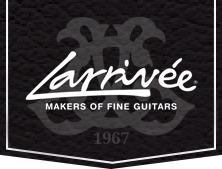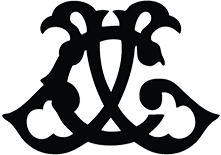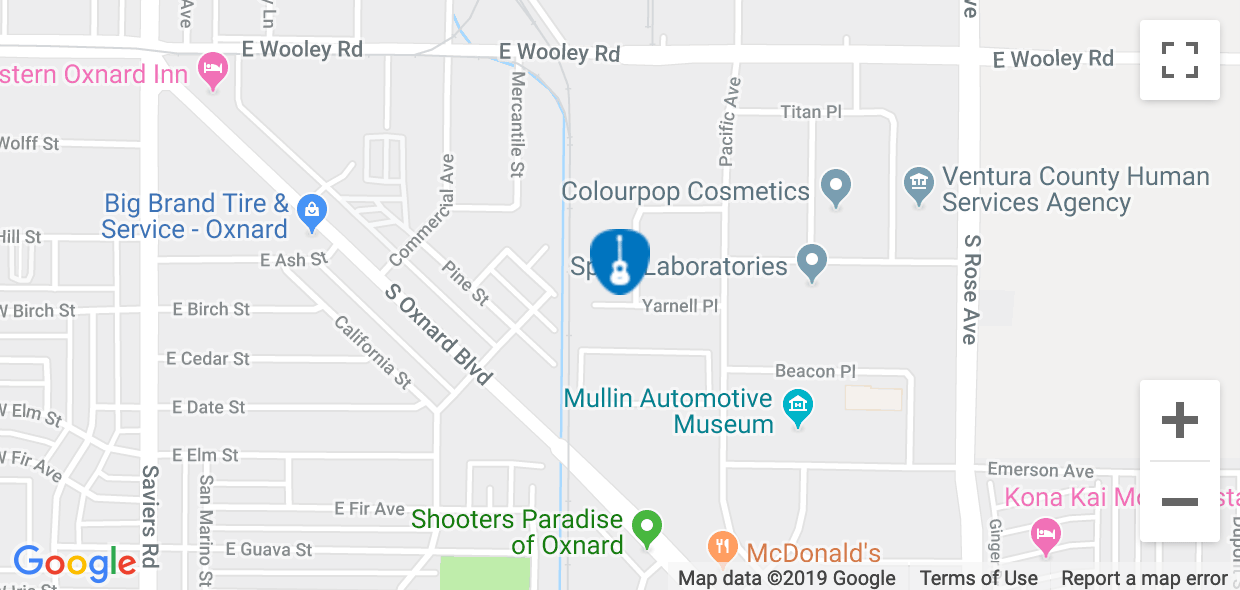History Of Larrivée Electric Guitars
History of Larrivée Electric Guitars And Basses
In 1982, Jean Larrivée closed his shop in Victoria, BC, and moved his operation to North Vancouver. Acoustic guitar sales were at a low ebb across the industry, and Jean was faced with some difficult decisions. He could have laid off his staff and continued producing acoustic guitars by himself or with a very small staff. With almost 20 years' worth of equipment, he could have made a very good living. The market was soft, but not dead, and Jean had distributors who could have absorbed what he could have produced with a small operation. However, he had "been there, done that", and he was not interested in covering old ground. The market for electric guitars was healthy, and for the first time in years, companies other than Gibson and Fender were having some success in the high-quality, high-end of the market.
Jean was intrigued by the challenge of learning to manufacture electric guitars. He had an excellent dealer and distributor network for acoustic guitars, good woodworking equipment, and extensive knowledge about guitars. He also knew many musicians who were willing to help steer him in the right direction. He decided to go for it.
The very first Larrivée Electric was made in Victoria, BC, in 1982, and was a double-cutaway "Strat" - like guitar. When the shop moved in 1983, production began almost immediately. The first electrics were bolt-on necks.
Models
The electric guitars underwent many changes over the seven years that we produced them. There are two main branches to the model tree: bolt-on necks and neck-thru-bodies. Bolt-on neck guitars had model names beginning with "L" (for Larrivée), and neck-thru-body designs had names beginning with "R" (for a reason that seemed logical at the time, but which no one still here can remember). Numbers were used to designate pickup configuration, as follows:
1 - Single humbucker in bridge position
2 - Double humbuckers
3 - Three single coils
4 - Two single coils plus a humbucker in the bridge position
Thus, an LS-3 was a bolt-on neck design with three single-coil pickups. An RS-2 would be a neck-thru-body design with 2 humbuckers. Body designs were not copies, exactly, but they were certainly derivative. The "S" in LS-3 stood for Strat* derived body (Larrivée Strat*-style -3 pickup), while an LT-2 would have been a Tele* derived body. Basses were called LB-2 and RB-2. Most had a Jazz Bass-type pickup in the bridge position and a P-Bass-style pickup in the neck position. It should be noted that the current model, RS-4, does not follow this naming path and that we have started over from scratch with names.
While the LS-, LT-, and RS- guitars, along with the LB-2 and RB-2 basses, accounted for the bulk of electric production, there were also other models. The middle period of electric production coincided with a brief return to the fashion of wild body shapes. Flying V designs and Randy Rhodes-style guitars were in style, and so we made some. It was also the time Eddie Van Halen burst onto the scene with his guitar painted with crossed lines. Suddenly, graphics were in high demand, and so we created them too. It was liberating in a way. With acoustic guitars, we had strong opinions and prejudices, if you prefer, about design and aesthetics. There was a right way to do things, and if the market didn't like it, the market needed to be educated. We didn't have the same emotional investment in solid bodies. Whatever the market wanted, we were more than happy to build.
Graphics? You got it. Absurd body designs? No problem. Kahler Tremelos with locking nuts? Sure. Oh, now they have to be Floyd Rose trems? We can do that, too. Banana headstocks? Day-Glo finishes? Why not.
While we cared deeply about building quality instruments, doing good woodworking, and installing high-quality hardware, we really didn't care whether the guitars looked conservative or 21st-century, Rolls-Royce or Corvette.
The final stage in the evolution of Larrivée electrics, before the electric market dried up, was the Carved Top series. These were very beautiful, yet very functional guitars, proof that we had learned many valuable lessons. They were RS-4's, neck-thru-body guitars with highly figured carved maple tops. Because one of the other companies was claiming a trademark on the banana-style headstock, and because the fashion wheel was already turning away from that look, we abandoned it for a three-on-a-side setup. The carved tops were offered in several translucent colors, as well as a sunburst finish. They had Larrivée pickups, which by then had evolved into a very good product, and either hard-tails or Floyd Rose*-licensed locking tremolo systems.
Although made in 1987, the original RS-2 and RS-4 designs are remarkably similar in design to the modern PRS guitars of today. The neck-thru bodies made during the late 80s with the carved tops are the most valuable use of Larrivée Electrics.
Pickups
Most basses came stock with EMG active pickups. They were the hottest bass pickups on the market at the time, and they were licensed to only a few manufacturers, and we felt very fortunate to be one of them. The early six-string guitars also had EMG pickups. Later, Jean built a pickup winding machine (From scratch) and produced his own pickups. Including magnetizing his own magnets! Once the Larrivée pickup became available, it became the standard pickup for six-string models, while the EMGs were offered as an additional cost option.
There was considerable competition among pickup manufacturers in those days. Replacement pickups were a big business, and several companies competed for their share of the market. Some of them are still in business today. We received many samples from companies trying to secure our OEM business (OEM stands for "Original Equipment Manufacturer"). It's a shorthand way of saying what comes standard on an instrument. Those pickups were usually tried on guitars, and if they performed acceptably, the test guitars were sold with them installed. So you could find a Larrivée electric with pickups other than Larrivée or EMG. It wouldn't necessarily mean the pickups had been replaced. We shipped a fair number of basses with pickups from Bill Bartolini. His pickups were great, but they were hard to obtain, and they had numerous wiring possibilities, so you didn't quite know what to do with them.
Materials
Many people have asked what woods their Larrivée electric guitars are made from. The answers are short and simple.
All bolt-on necks were made of a single piece of eastern maple.
All fingerboards were ebony.
Bodies for bolt-on necks were alder
Body wings for neck-thrus were alder
The core of the neck-thru designs was laminated eastern maple.
Other Brand Names
Larrivée guitars produced some solid body instruments with brand names other than Larrivée. Schon Guitars and Signature Guitars were produced under contract to other companies, as were some Kramer guitars. Scorpion Guitars was an in-house brand. A few prototypes were built for Robin Guitars and Tobias basses, but those never went into production.
Schon Guitars - Neil Schon, the renowned electric guitar player from the band Journey, had a dream of marketing his own line of guitars. He wanted to design the guitars and have his people handle marketing and distribution, but he was smart enough not to want to manufacture them himself. Initially, he approached Jackson Guitars, and they produced the first Schons. For whatever reason, the business relationship didn't work out, and Neil approached Jean Larrivee and asked him to build the guitars. Jean had already gone through the worst of a steep learning curve and was feeling confident in his ability to build the guitars. Sales of Larrivée electrics had been good in Canada and Europe, but had never really taken off in the US. Jean felt that the association with a famous and respected guitarist like Schon could only enhance his own credibility in the electric guitar world, so he agreed to take on the contract. Perhaps at some future time, I'll collect more details on this production for this space. It was a few hundred instruments. The entire project was somewhat behind the curve. By the time it really took off, the entire market had undergone significant changes. Electric guitar sales were weakening for everybody. The project lost its purpose and simply petered out.

JCL Players Club
Sign up now and receive emails for exclusive Larrivée promotions, Pro Shop deals, exciting giveaways, and upcoming news and events.
Join the Club



